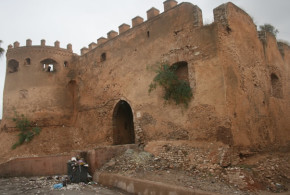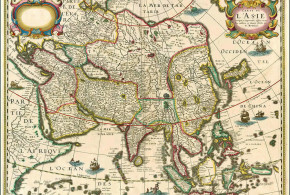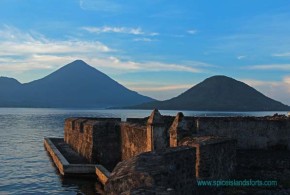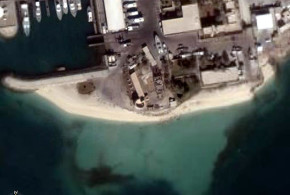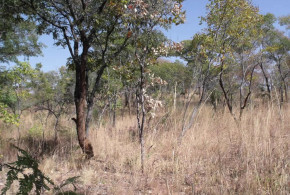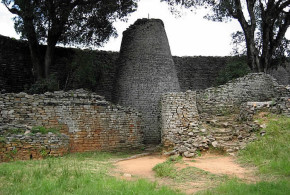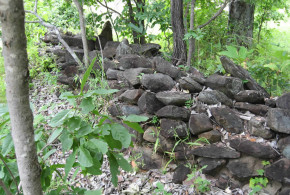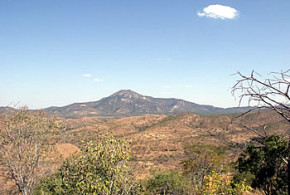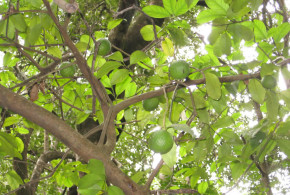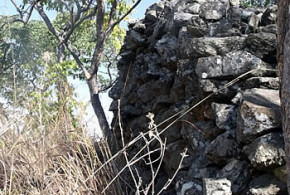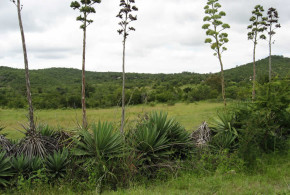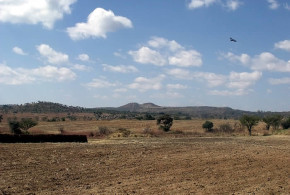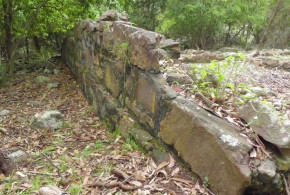Photos by João Sarmento. Written by Marco Ramerini. Some pictures of what remains of forts built by the Portuguese in Morocco in the 15th and 16th century. Here are presented photos of Azamor (Azemmour), Safim (Safi) and Mazagão (El Jadida) taken by João Sarmento. The fort of Azamor (Azemmour) was under Portuguese control between 3 September 1513 and October 1541. The fort of Safim (Safi) called by ...
Read More »Portuguese Colonialism
The Role of the Portuguese Language in Lusophone Asia
Written by Dietrich Köster Portuguese India/Estado da Índia Portuguesa – Goa, Daman/Damão and Diu Until the invasion of Nehru’s troops in December 1961 Portuguese was the official language, while after the annexation English received this status. The local languages Konkani in Goa and Gujarati in Damão and Diu only play a minor role in public life. Even during the Portuguese ...
Read More »The Forts of the Spice Islands of Indonesia, Today
Written by Simon Pratt Forts of the Banda Islands The Banda Islands, reached via Ambon, contain some of the most historic and evocative forts of the old Dutch East Indies. Most impressive is Dutch-built Fort Belgica (constructed 1611) towering over the tiny township of Bandaneira. Following refurbishment in the 1990’s it remains the best preserved of all forts scattered across ...
Read More »Bahrain: Portuguese Fort of Qal’ at Arad
Written by Marco Ramerini. Photos by João Sarmento. English text revision by Dietrich Köster. The Portuguese Fort of Qal’ at Arad, Bahrain. The fort of Arad is located on the island of Muharraq – the northernmost island of the archipelago of Bahrain – the fort rises in front of the beach in a cove along the southern coast of the ...
Read More »Bahrain: Portuguese Fort of Halat Bu Maher
Written by Marco Ramerini The fort of Halat Bu Maher (also know as Qal’at Abu Mahir) is located on Muharraq island – the northernmost island of the archipelago – and was strategically situated to control both the straits between Bahrain and Muharraq, and the bay between Muharraq Town and Arad Fort. In 1630s. the Portuguese maps (“Livro das Plantas de ...
Read More »Bahrain: Portuguese Fort of Qala’at al-Bahrain (Bahrain Fort)
Written by Marco Ramerini. Photos by João Sarmento. English text revision by Dietrich Köster. The Portuguese Fort of Qala’at al-Bahrain (Bahrain Fort), Bahrain. Remains of Qal’ At Al-Bahrain (16th century) or Portuguese Fort. The fort consists of three huge strongholds and the remnants of two towers in the middle and full walls linking the three strongholds together. It is surrounded ...
Read More »Maramuca: Portuguese Settlement, Market (Feira) in Zimbabwe
Written by Chris Dunbar. All pictures are copyright by Chris Dunbar. Maramuca, 2010: The trip to Maramuca was via the town of Chegutu and then another 30 odd kilometres on an old strip road to the gold mining town of Chakari. From Chakari we had to travel on a dirt road which later turned into a dirt track. The location ...
Read More »Great Zimbabwe: a ruined city in the southeastern hills of Zimbabwe
Written by Marco Ramerini. Photos copyright by Chris Dunbar. Great Zimbabwe was the capital of the Kingdom of Zimbabwe where was the royal palace and the seat of the political power. The city was surrounded by massive walls that reach 5 meters in height which were constructed without mortar. The area where is Great Zimbabwe was occupied from the fourth century ...
Read More »Portuguese Forts, Markets (Feira) and Settlements in Zimbabwe
Written by Chris Dunbar The following is a list of sites that were investigated by the Rhodesian / Zimbabwean Government, no suspected Portuguese sites have been restored (unfortunately) and no more have been added since the first cataloguing was done in the early 1970’s. A number of the historical trading centres and forts have still not been located and further ...
Read More »Massapa: Portuguese Settlement, Market (Feira) and Fort in Zimbabwe
Written by Chris Dunbar. All pictures are copyright by Chris Dunbar. Massapa was described in 1573 as being close to the wooded mountain Fura (Mt Darwin) had a Dominican Church dedicated to the Lady of the Rosary and was deserted in 1693 when the Rozvi went on the rampage that ended the Portuguese control on the whole Northern Zimbabwe plateau ...
Read More »Piringani: Portuguese Settlement, Market (Feira) in Zimbabwe
Written by Chris Dunbar. All pictures are copyright by Chris Dunbar. So to Piringani (Piringani: 16°59′ 48.63″S 30°11′ 27.97″E), in the north west of Zimbabwe, in the farm lands of Doma, I went. Rumour had it that there was a Lemon forest and that it was marked and known by the local farmers and the Department of National Monuments. I ...
Read More »Ruanga: a native settlement in Zimbabwe
Written by Chris Dunbar. All pictures are copyright by Chris Dunbar. Ruanga, 2012: Some pictures from Ruanga a settlement that was excavated in the 1960’s and it was found to have been inhabited in the 1500’s to the end of the 1650’s. Native black africans, but what is interesting is that perhaps, according to Hugh Tracey assumption, Antonio Fernades visited ...
Read More »Makaha: Portuguese Settlement, Market (Feira) in Zimbabwe
Written by Chris Dunbar. All pictures are copyright by Chris Dunbar. The trip to find the site of Makaha was via the town of Mutoko and then on a dirt road for 90 minutes into the growth point of Makaha. Once we left the growth point we had to resort to four wheel driving as the road turned to a ...
Read More »Luanze: Portuguese Settlement, Market (Feira) and Fort in Zimbabwe
Written by Chris Dunbar. All pictures are copyright by Chris Dunbar. The Fort of Luanze, where the Portuguese hold a market, is in the lands of Mocaranga, forty leagues from Tete…..this fort has a church, served by a dominican friar who administrates the sacraments to the christians who dwell there or pass through. Pedro Barreto de Rezende, 1634. I then ...
Read More »Dambarare: a Portuguese Settlement, Market (Feira) and Fort in Zimbabwe
Written by Chris Dunbar. All pictures are copyright by Chris Dunbar. This site is scattered over a very wide area and was a large settlement (Dambarare covers about 6 square km’s), one of the largest Earthworks numbered 2 was flooded when the Jumbo Mine Dam was built, a great shame as while a little excavation work was done the Professor ...
Read More »Bittangabee Bay ruins, Australia
Text and Photos by Jones Matos da Silva Bittangabee Bay is located in Ben Boyd National Park to the south of the coastal town of Eden along the south coast of New South Wales, Australia. These ruins are claimed by Kenneth McIntyre to be of Portuguese origin. I drove there last month and took me 8 hours drive from Sydney (480 ...
Read More »India. List of Portuguese colonial forts and possessions
Written by Marco Ramerini. English text revision by Dietrich Köster. INDIA: Diu: (20°43’N – 71°00’E) Forte or Castelo do Mar, Castelo de Diu or Fortaleza de São Tomé Portuguese: 21 Dec. 1535 fortress – 18/19 Dec. 1961 Leao “A Província do Norte do Estado da Índia” Island of Diu: Fortaleza de Nagoa (1744), Fortaleza de Brancavara (1774), Forte de Simbor, Forte de ...
Read More »Sri Lanka (Ceylon). List of Portuguese colonial forts and possessions
Written by Marco Ramerini. English text revision by Dietrich Köster. SRI LANKA (CEYLON): Portuguese: 1518 – 1597 the Kingdom of Kotte is tributary to Portugal. Portuguese: 1597: the whole of the territory of the Kingdom of Kotte is under the control of the Portuguese, they control four Provinces or Disawani: Matara (along the sea coast from Kotte to Walawe Ganga), Saparagamuwa (north of Matara ...
Read More »West Africa. List of Portuguese colonial forts and possessions
Written by Marco Ramerini. English text revision by Dietrich Köster. SPANISH AFRICA: Ceuta: Portuguese: 21 August 1415 – 1640 to Spain (after the Portuguese rebellion) E. Sanceau “Castelos em África” Livraria Civilização 1961 Porto. D. Lopes “A Expansão em Marrocos” Teorema Lisboa MOROCCO: Alcacer Ceguer (El Qsar es Seghir): (35°51’N – 05°34’W) Portuguese: 23 October 1458 – 1550 E. Sanceau “Castelos ...
Read More »South East Asia and in Far East Asia. List of Portuguese colonial forts and possessions
Written by Marco Ramerini. English text revision by Dietrich Köster. BURMA: Martabão (Martaban): (16°32’N – 97°36’E) Portuguese: 1514 feitoria – 1516 Subrahmanyam “Improvising Empire – Portuguese trade and settlements in the Bay of Bengal 1500 – 1700” or “”Comércio e conflito – A presença portuguesa no Golfo de Bengala 1500 – 1700” Tenasserim: (12°06’N – 98°56’E) Portuguese: wooden fort on a hill ...
Read More » Colonial Voyage The website dedicated to the Colonial History
Colonial Voyage The website dedicated to the Colonial History
